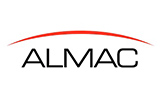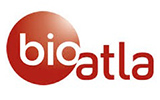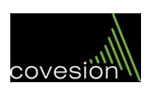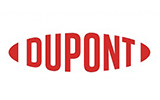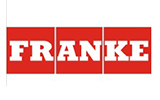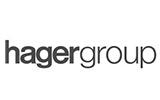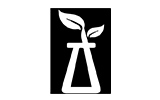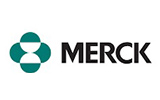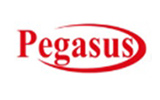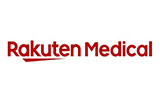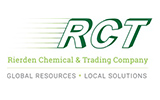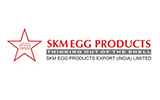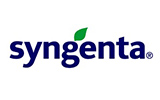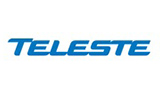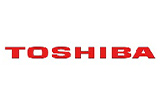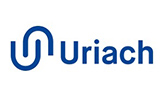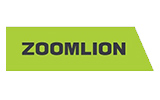CHAPTER 1:INTRODUCTION
1.1.Report description
1.2.Key benefits for stakeholders
1.3.Key market segments
1.4.Research methodology
1.4.1.Primary research
1.4.2.Secondary research
1.4.3.Analyst tools and models
CHAPTER 2:EXECUTIVE SUMMARY
2.1.Key findings
2.1.1.Top Investment Pockets
2.2.Top winning strategies
2.2.1.Top winning strategies, by year
2.2.2.Top winning strategies, by development
2.2.3.Top winning strategies, by company
2.3.CXO perspective
CHAPTER 3:MARKET OVERVIEW
3.1.Market definition and scope
3.2.Porters Five Forces Analysis
3.2.1.Moderate bargaining power of suppliers
3.2.2.High Threat of New Entrant
3.2.3.High threat of substitutes
3.2.4.High Bargaining Power of Buyers
3.2.5.Moderate Competitive Rivalry
3.3.Value Chain Analysis
3.4.Patent Analysis
3.4.1.By Countries (2013-2019)
3.5.Market dynamics
3.5.1.Drivers
3.5.1.1.Increase in demand for clean water for domestic/industrial purposes
3.5.1.2.Growth of End Users
3.5.2.Restraint
3.5.2.1.Environmental regulations on toxic biocides
3.5.2.2.Variation in the prices of raw materials
3.5.3.Opportunities
3.5.3.1.Market opportunity for silver-based biocides
3.5.3.2.Development of total organic biocide systems
3.6.Pricing Analysis
3.7.Impact of Key Regulations
3.7.1.Environmental protection policy and regulations
3.8.Impact of corona outburst on the biocides market
3.8.1.COVID-19 Disinfectant List
3.9.Macroeconomic Factors
3.9.1.Personal care industry outlook
3.9.1.1.Global Personal Care Market Outlook, 2019
3.9.2.Personal Care Ingredients Outlook
CHAPTER 4:GLOBAL BIOCIDES MARKET, BY TYPE
4.1.Overview
4.1.1.Market size and forecast, by type
4.2.Metallic Compounds
4.2.1.Key market trends, growth factors, and opportunities
4.2.2.Market size and forecast, by region
4.2.3.Market share analysis, by country
4.2.4.Market size and forecast, by metallic compound
4.2.4.1.Copper
4.2.4.2.Mercury
4.2.4.3.Magnesium
4.2.4.4.Others
4.3.Halogen-Based Biocides
4.3.1.Key market trends, growth factors, and opportunities
4.3.2.Market size and forecast, by region
4.3.3.Market share analysis, by country
4.3.4.Market size and forecast, by halogen-based biocides types
4.3.4.1.Chlorine
4.3.4.2.Bromine
4.3.4.3.Iodine
4.3.4.4.Others
4.4.Organic Acids
4.4.1.Key market trends, growth factors, and opportunities
4.4.2.Market size and forecast, by region
4.4.3.Market share analysis, by country
4.4.4.Market size and forecast, by organic acids
4.4.4.1.Formic Acid
4.4.4.2.Lactic Acid
4.4.4.3.Ascorbic Acid
4.4.4.4.Others
4.5.Sulphones
4.5.1.Key market trends, growth factors, and opportunities
4.5.2.Market size and forecast, by region
4.5.3.Market share analysis, by country
4.7.Phenol-Based Biocides
4.7.1.Key market trends, growth factors, and opportunities
4.7.2.Market size and forecast, by region
4.7.3.Market share analysis, by country
4.7.4.Market size and forecast, by phenol-based
4.7.4.1.Phenoxyethanol
4.8.Others (Nitrogen-based biocides, inorganic biocides, and others)
4.8.1.Key market trends, growth factors, and opportunities
4.8.2.Market size and forecast, by region
4.8.3.Market share analysis, by country
CHAPTER 5:GLOBAL BIOCIDES MARKET, BY END-USE INDUSTRY
5.1.Overview
5.1.1.Market size and forecast, by end-use industry
5.2.Food & Beverages
5.2.1.Key market trends, growth factors, and opportunities
5.2.2.Market size and forecast, by region
5.2.3.Market share analysis, by country
5.3.Construction
5.3.1.Key market trends, growth factors, and opportunities
5.3.2.Market size and forecast, by region
5.3.3.Market share analysis, by country
5.4.Agriculture
5.4.1.Key market trends, growth factors, and opportunities
5.4.2.Market size and forecast, by region
5.4.3.Market share analysis, by country
5.5.Pharmaceuticals
5.5.1.Key market trends, growth factors, and opportunities
5.5.2.Market size and forecast, by region
5.5.3.Market share analysis, by country
5.6.Personal Care
5.6.1.Key market trends, growth factors, and opportunities
5.6.2.Market size and forecast, by region
5.6.3.Market share analysis, by country
5.7.Water Treatment
5.7.1.Key market trends, growth factors, and opportunities
5.7.2.Market size and forecast, by region
5.7.3.Market share analysis, by country
5.8.Paints & Coatings
5.8.1.Key market trends, growth factors, and opportunities
5.8.2.Market size and forecast, by region
5.8.3.Market share analysis, by country
5.9.Home Care
5.9.1.Key market trends, growth factors, and opportunities
5.9.2.Market size and forecast, by region
5.9.3.Market share analysis, by country
5.10.Others
5.10.1.Key market trends, growth factors, and opportunities
5.10.2.Market size and forecast, by region
5.10.3.Market share analysis, by country
CHAPTER 6:BIOCIDES MARKET, BY REGION
6.1.Overview
6.1.1.Market size and forecast, by region
6.2.North America
6.2.1.Key market trends, growth factors, and opportunities
6.2.2.Market size and forecast, by type
6.2.3.Market size and forecast, by end-use industry
6.2.4.Market size and forecast, by country
6.2.5.U.S.
6.2.5.1.Market size and forecast, by type
6.2.5.2.Market size and forecast, by end-use industry
6.2.6.Canada
6.2.6.1.Market size and forecast, by type
6.2.6.2.Market size and forecast, by end-use industry
6.2.7.Mexico
6.2.7.1.Market size and forecast, by type
6.2.7.2.Market size and forecast, by end-use industry
6.3.Europe
6.3.1.Key market trends, growth factors, and opportunities
6.3.2.Market size and forecast, by type
6.3.3.Market size and forecast, by end-use industry
6.3.4.Market size and forecast, by country
6.3.6.France
6.3.6.1.Market size and forecast, by type
6.3.6.2.Market size and forecast, by end-use industry
6.3.7.Germany
6.3.7.1.Market size and forecast, by type
6.3.7.2.Market size and forecast, by end-use industry
6.3.8.UK
6.3.8.1.Market size and forecast, by type
6.3.8.2.Market size and forecast, by end-use industry
6.3.10.Spain
6.3.10.1.Market size and forecast, by type
6.3.10.2.Market size and forecast, by end-use industry
6.3.11.Italy
6.3.11.1.Market size and forecast, by type
6.3.11.2.Market size and forecast, by end-use industry
6.3.12.Rest of Europe
6.3.12.1.Market size and forecast, by type
6.3.12.2.Market size and forecast, by end-use industry
6.4.Asia-Pacific
6.4.1.Key market trends, growth factors, and opportunities
6.4.2.Market size and forecast, by type
6.4.3.Market size and forecast, by end-use industry
6.4.4.Market size and forecast, by country
6.4.5.India
6.4.5.1.Market size and forecast, by type
6.4.5.2.Market size and forecast, by end-use industry
6.4.6.China
6.4.6.1.Market size and forecast, by type
6.4.6.2.Market size and forecast, by end-use industry
6.4.7.Japan
6.4.7.1.Market size and forecast, by type
6.4.7.2.Market size and forecast, by end-use industry
6.4.9.South Korea
6.4.9.1.Market size and forecast, by type
6.4.9.2.Market size and forecast, by end-use industry
6.4.10.Australia
6.4.10.1.Market size and forecast, by type
6.4.10.2.Market size and forecast, by end-use industry
6.4.11.Rest of Asia-Pacific
6.4.11.1.Market size and forecast, by type
6.4.11.2.Market size and forecast, by end-use industry
6.5.LAMEA
6.5.1.Key market trends, growth factors, and opportunities
6.5.2.Market size and forecast, by type
6.5.3.Market size and forecast, by end-use industry
6.5.4.Market size and forecast, by country
6.5.5.Brazil
6.5.5.1.Market size and forecast, by type
6.5.5.2.Market size and forecast, by end-use industry
6.5.6.Saudi Arabia
6.5.6.1.Market size and forecast, by type
6.5.6.2.Market size and forecast, by end-use industry
6.5.7.South Africa
6.5.7.1.Market size and forecast, by type
6.5.7.2.Market size and forecast, by end-use industry
6.5.8.Rest of LAMEA
6.5.8.1.Market size and forecast, by type
6.5.8.2.Market size and forecast, by end-use industry
CHAPTER 7:COMPETITIVE LANDSCAPE
7.1.Introduction
7.1.1.MARKET PLAYER POSITIONING, 2019
7.2.Market share analysis of top players, 2019 (%)
7.3.Product mapping of top 12players
7.4.Competitive Heatmap
7.5.Key developments
7.5.1.Expansions
7.5.2.Acquisition
7.5.3.Product launch
7.5.4.Partnership
CHAPTER 8:COMPANY PROFILES
8.1.BASF SE
8.1.1.Company overview
8.1.2.Company snapshot
8.1.3.Operating business segments
8.1.4.Product portfolio
8.1.5.Business performance
8.1.6.Key strategic moves and developments
8.2.BERKSHIRE HATHAWAY
8.2.1.Company overview
8.2.2.Company snapshot
8.2.3.Operating business segments
8.2.4.Product portfolio
8.2.5.Business performance
8.3.CLARIANT AG
8.3.1.Company overview
8.3.2.Company snapshot
8.3.3.Operating business segments
8.3.4.Product portfolio
8.3.5.Business performance
8.4.CORBION N.V.
8.4.1.Company overview
8.4.2.Company snapshot
8.4.3.Operating business segments
8.4.4.Product portfolio
8.4.5.Business performance
8.4.6.Key strategic moves and developments
8.5.DUPONT
8.5.1.Company overview
8.5.2.Company snapshot
8.5.3.Operating business segments
8.5.4.Product portfolio
8.5.5.Business performance
8.5.6.Key strategic moves and developments
8.6.KEMIN INDUSTRIES, INC.
8.6.1.Company overview
8.6.2.Company snapshot
8.6.3.Product portfolio
8.7.KERRY
8.7.1.Company overview
8.7.2.Company snapshot
8.7.3.Operating business segments
8.7.4.Product portfolio
8.7.5.Business performance
8.7.6.Key strategic moves and developments
8.8.LANXESS AG
8.8.1.Company overview
8.8.2.Company snapshot
8.8.3.Operating business segments
8.8.4.Product portfolio
8.8.5.Business performance
8.8.6.Key strategic moves and developments
8.9.LONZA GROUP AG
8.9.1.Company overview
8.9.2.Company snapshot
8.9.3.Operating business segments
8.9.4.Product portfolio
8.9.5.Business performance
8.9.6.Key strategic moves and developments
8.10.NOURYON
8.10.1.Company overview
8.10.2.Company snapshot
8.10.3.Product portfolio
8.11.SOLVAY SA
8.11.1.Company overview
8.11.2.Company snapshot
8.11.3.Operating business segments
8.11.4.Product portfolio
8.11.5.Business performance
8.12.THOR GROUP LIMITED
8.12.1.Company overview
8.12.2.Company snapshot
8.12.3.Product portfolio


